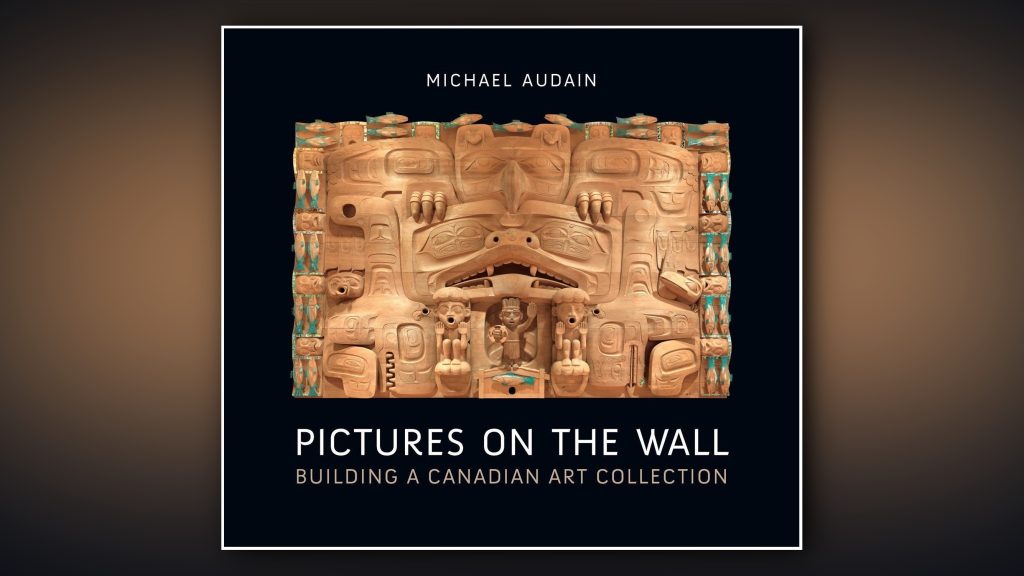Anybody can enjoy art, and everybody should, says B.C. collector Michael Audain

Posted January 28, 2024 1:33 pm.
He is best known as the founder and chairman of Polygon, a family of companies that has produced more than 34,000 homes in the Metro Vancouver area since 1980, and for the art gallery in Whistler that bears his name.
Now, Michael Audain is out with Pictures on the Wall: Building a Canadian Art Collection — a book that explains how, over seven decades, this self-taught art collector amassed a distinguished and diverse collection of Canadian and international art – including the largest private collection of Emily Carr artwork in the country.
“Collectors — and I guess I have been a collector a lot of my life — always have a desire to share their collections with other people instead of, say, hoarding it to themselves. They want to share it,” he said.
John Ackermann speaks to Michael Audain, author of Pictures on the Wall
“It doesn’t matter if they collect cars or they collect teacups or, in my case, collecting art and I thought the book is a good way of sharing it.”
The coffee table-style book contains photographs of 77 works by 57 artists across its 206 pages.
Audain was in his 20s and still a student when he began collecting. He says it’s a common misconception that one needs to be wealthy to appreciate art.
“I think it is possible with modest means to still collect art, and with some wonderful examples of major collectors, who through judicious selection, they have been able to build substantial collections,” he said.
The works of B.C.’s Emily Carr make up the heart of Audain’s collection.
“I think Emily Carr is definitely one of the most important artists of the 20th century. I think we [already] know that in Canada,” he said. “[But] she’s not known well enough internationally, and I hope that will be fixed before too long.”
Audain grew up mostly on the West Coast and spent his early days in Victoria, Carr’s hometown.
“[So], I was familiar with the landscape that Emily Carr portrayed, and I would spend time in the deep, dark forests that interested her,” he said.
Audain admits he didn’t take to Carr’s work right away. It didn’t help matters that his father once called her “that batty old woman who used to walk around town
pushing a monkey and a dog in a baby’s pram” or the time his stepmother sniffed that Carr painted with “all the wrong colours.”
“I have to confess that Emily Carr’s work first scared me,” he said.
“I was about 10 years old in a Saturday morning lecture at the [Royal BC Museum] and we were all sitting in the dark and then they projected these slides onto the screen, and they were really scary.”
“It wasn’t until I was in my early 20s and I’d already made the rounds of some of the important art museums in Europe and New York, but I came to the decision, yes, that woman is a really important artist.”
Audain has been collecting art for more than 70 years – mainly pieces from British Columbia, Mexico, and Quebec. But there have been some outliers too, including an Andy Warhol painting of Queen Elizabeth II he bought in Vancouver back in 1988.
“It was pretty simple; I was driving down Granville Street one morning and I saw it in the window of an art gallery called the Equinox,” he said.
“I was able to acquire it at what today would seem a very, very reasonable price compared to what his work is selling for on the international market today.”
Audain lived in New York for a time in the ’60s, and often drank at one of the bars Warhol frequented. But after some years of the painting hanging in his home, Audain decided to part with it.
“I was able to use some of the handsome proceeds from the sale of it to acquire more art related to say, British Columbia.”
Purchased by a mystery buyer, Audain’s Warhol is now part of the Royal Collection in London.
“I’m told that’s where it ended up. That’s all I know,” he said.
Now 86, Audain has reached a stage in life when many others in his position begin to think about the legacy they will leave behind. He admits he hasn’t really thought about how he would like to be remembered, whether for building homes or collecting and promoting art.
“I hope that the homes that we build will last a great many years. I hope so. But I know that the artworks we’ve collected will last,” he said.
“There’s a Latin saying, Ars long, vita brevis. Art is long, life is short. It’s been my privilege to live with some very important art that has made my life a lot richer as I’m sure it does other people in our province and country who had the opportunity to collect the tremendous, wonderful art that’s being created today.”
Pictures on the Wall: Building a Canadian Art Collection is published by Douglas & McIntyre.








